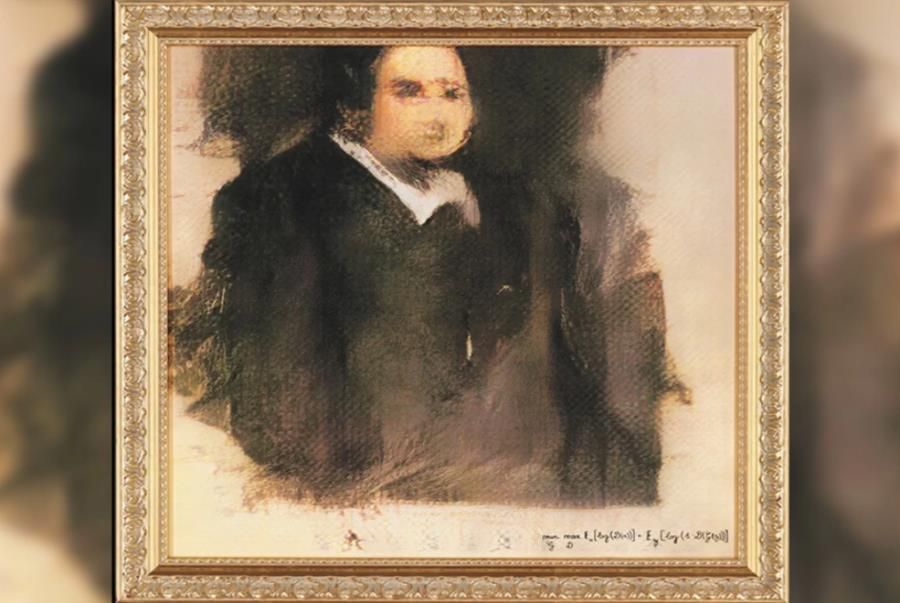Image created by artificial intelligence sold for nearly half a million dollars
A portrait of a fictional man in a dark shirt created by artificial intelligence was sold at Christie's auction house for $442,500. The price 45 times exceeded the estimated value of the work.
Artificial intelligence algorithms have taken the art world by storm. Image „Portrait of Edmond Belama” is the first painting created by artificial intelligence to be sold at auction. The portrait is part of a series of paintings in depicting the fictional Belamy family.
The man with the fuzzy face „painted” in the style "Old Master " is the work of Paris-based art collective Obvious. The collective, which rego enter Hugo Caselles-Dupré, Pierre Fautrel and Gauthier Vernier, used the Generative Adversarial Network (GAN) algorithm developed by Robbie Barrat. The artists admitted to using Barrat’s algorithm, but indicated that they made significant changes to the code.
The GAN algorithm consists of two ch separate members . One of them – the so-called Generator – creates art. The second is the Discriminator, which It is designed to It is able to perceive r he difference between images painted by humans and those created by artificial intelligence.
– We fed the system with a set of 15 000 portraits in paintings painted between the 14th and 20th centuries. The generator created a new image based on the set, and then the Discriminator pr b was able to see r The difference between the image created by a human and the image created by the Generator. The goal was to confuse the Discriminator in order to „thought”, that the new image is a real portrait. This is how our artwork was created – said Caselles-Dupré.
According to a specialist from Christie's auction house, The Discriminator is easier to mislead than a man. Although they acknowledged that the idea of creating a painting The idea of auctioning them off was a bold move.
– Portraiture is a particularly difficult genre for artificial intelligence. People are more sensitive to the curvature and complexity of cracks in the face from the machines – a representative of the auction house admitted…
The appraisers estimated the value of the painting at 7-10 thousand dollars hich is why the amount for which hich work was sold– close p ł million dollar – surprise everyone. The auction itself lasted about 7 minutes, and the buyer did not reveal his identity.
The Obvious collective also used an algorithm to create other images, m.in. nudes and landscapes. – It turned out that portraits were the best way b to illustrate our point. We wanted to show that algorithms are able to mimic the creativity – Caselles-Dupr explainedé.
Controversy immediately arose over who actually is the author of the painting sold. – If the artist is the one who If an artist creates an image, it will be a machine, but if the artist is the one who ry have a vision and want to share it, the authors are us – noted Caselles-Dupré.
